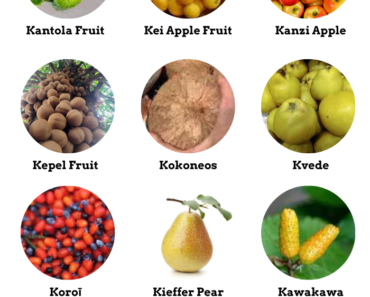Are you looking for a unique way to spice up your grocery list? Look no further than the humble fruits that start with the letter S! From strawberries to sweet shaddock, there are plenty of delicious fruits that begin with S. In this blog post, we’ll take a look at 48 of these scrumptious seasonal treats and what makes them so special.
From their taste and texture to their nutritional properties, you’ll be sure to find something to love about each one! Plus, get ready to drool over beautiful pictures of each fruit! Get ready to explore all the exciting fruits that begin with S!
List of Fruits That Start With S
- Soncoya Fruit
- Star Apple
- Sand Cherry
- Sour Cherry Fruit
- Salmonberry
- Shaddock Fruit
- Saguaro Fruit
- Satsuma Orange
- Sloe Fruit
- Salal Fruit
- Soursop Fruit
- Shonan Gold Fruit
- Sapucaia Fruit
- Sunset Apple
- Sweetbay Magnolia Fruit
- Seville Orange
- Spiked Melon
- Sweet Orange
- Sour Plum Fruit
- Sharon Fruit
- Sugar Apple
- Seagrape Fruit
- Sunset Mango
- Screwpine Fruit
- Snake Fruit
- Splendor Apple Fruit
- Star Fruit
- Sudachi Fruit
- Sugar Baby Watermelon
- Safou Fruit
- Sun berry Fruit
- Strawberry Guava
- Sarvisberry Fruit
- Sweet Granadilla
- Sweet Pepper Fruit
- Stinking Bishop Pear Fruit
- Sugarberry Fruit
- Seriguela Fruit
- Sycamore Fruit
- Sapodilla Fruit
- Saigon Mango
- Sapo De Piel
- Santol Fruit
- Strawberry Fruit
- Sweet Lime Fruit
- Salak Fruit
- Sugar Palm
- Spanish Lime Fruit
Tropical Fruits That Start With S
- Sineguelas (Spanish plum)
- Salak (snake fruit)
- Soncoya
- Sapodilla
- Sycamore fig
- Salmonberry
- Safou
Exotic Fruits That Start With S
- Saguaro
- Sugar Apple
- Salak
- Sapodilla
- Safou
- Star Fruit
- Santol
- Surinam Cherry
- Strawberry Tree
Fruits Names That Begin With S and Pictures
| Sweet Pepper Fruit | 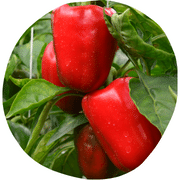 |
| Sweet Lime Fruit | 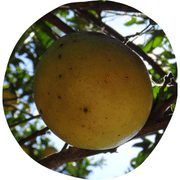 |
| Soursop Fruit |  |
| Sapo De Piel |  |
| Sweet Granadilla |  |
| Sugar Baby Watermelon |  |
| Sugarberry Fruit |  |
| Sour Plum Fruit |  |
| Saigon Mango |  |
| Safou Fruit |  |
| Sarvisberry Fruit |  |
| Star Fruit |  |
| Splendor Apple Fruit |  |
| Salak Fruit |  |
| Sugar Apple |  |
| Sycamore Fruit | 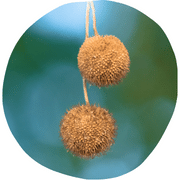 |
| Spanish Lime Fruit |  |
| Sugar Palm |  |
| Soncoya Fruit |  |
| Sharon Fruit |  |
| Salal Fruit |  |
| Sapodilla Fruit | 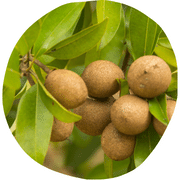 |
| Santol Fruit | 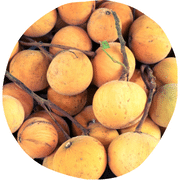 |
| Strawberry Guava |  |
| Sloe Fruit | 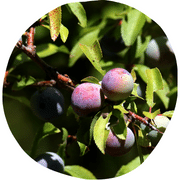 |
| Star Apple | 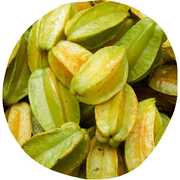 |
| Sand Cherry |  |
| Shonan Gold Fruit |  |
| Seville Orange |  |
| Sun berry Fruit |  |
| Shaddock Fruit |  |
| Snake Fruit |  |
| Sunset Apple |  |
| Strawberry Fruit |  |
| Saguaro Fruit |  |
| Sapucaia Fruit | 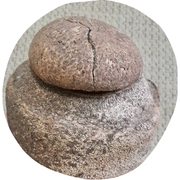 |
| Satsuma Orange |  |
| Stinking Bishop Pear Fruit |  |
| Sunset Mango |  |
| Screwpine Fruit |  |
| Spiked Melon |  |
| Sweetbay Magnolia Fruit |  |
| Seriguela Fruit |  |
| Sudachi Fruit |  |
| Seagrape Fruit |  |
| Sweet Orange |  |
| Salmonberry | 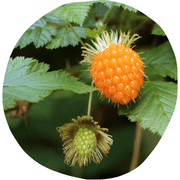 |
| Sour Cherry Fruit |  |
Fruits Starting With S and Properties
Soncoya Fruit
The soncoya fruit is native to Mexico and Central America. It is also known as the “coconut apple” due to its husk-like exterior and sweet, creamy edible pulp. The soncoya has a unique flavor that is similar to a combination of coconut, banana, and anise seeds. It is filled with vitamins A, E, and C, plus an abundance of antioxidants.
Star Apple
The star apple is native to Jamaica, Mexico, Guatemala, and other parts of Central America. This fruit has a sweet-tart flavor with hints of cinnamon and clove. Its taste isn’t its only standout feature – the star apple changes color when ripe! From green or yellow to a dark purple hue, it’s easy to tell when the time for eating has come!
Sand Cherry Fruit
Sand cherries are small fruits found in North America. These drupes have a flaky texture from their thin skin which surrounds their sweet-tart flesh. While these tiny cherries may be small in size, they pack plenty of punch nutritionally speaking! With high levels of antioxidants like Vitamin A and Beta Carotene, they make a great snack choice.
Sour Cherry Fruit
Sour cherries are bright red drupes found in various locations around the globe including Europe and Asia Minor. They contain less sugar than their sweeter counterparts but boast two powerful antioxidant carotenoids – lutein and zeaxanthin – making them one of nature’s best sources of eye health support! Sour cherries can be enjoyed both fresh off the tree and cooked in recipes such as pies or jams.
Salmonberry Fruit
Salmonberries are found throughout North America from Alaska down to California as well as parts of British Columbia. This tart berry gets its name from its orange-pink color resembling salmon flesh on occasion! Though small in size these berries provide a healthy dose of Vitamin C and dietary fiber alongside their high levels of antioxidants like anthocyanins which can help protect your heart health!
Saguaro Fruit
The saguaro fruit is a small, yellowish-green berry that grows off the large cacti of the same name. It is extremely sweet and high in sugar content, making it a popular snack for desert animals such as coyotes, foxes, and skunks. The fruit also has several medicinal properties including antibacterial and anti-inflammatory capabilities.
Satsuma Orange
The satsuma orange is a citrus fruit found mainly in Japan. It has a thick skin that is easy to peel off and has a juicy pulp inside. Its flavor can be described as slightly sour but very sweet at the same time. Satsuma oranges are known to contain higher levels of vitamin C than other types of oranges, making them great for boosting your immune system.
Sloe Fruit
Sloe fruits are small deep purple berries native to Europe and parts of South Africa and Asia. They have a tart flavor reminiscent of almonds or cherries with just a hint of sweetness. Sloe fruits can be eaten fresh or preserved in jams and liqueurs, where their tart taste adds depth to the product’s flavor profile.
Salal Fruit
Salal fruits are blueberry-like berries that grow wild throughout North America’s west coast regions, from California all the way to Alaska. They are usually smaller than regular blueberries and have a sweet but mild flavor that pairs especially well with cream or yogurt-based desserts like cheesecake or ice cream sundaes.
In addition to their delicious taste, salal fruits also contain vitamins A and E as well as minerals such as potassium and iron that make them an excellent addition to any healthy diet.
Soursop Fruit
Soursop fruits are tropical delicacies that look like spiky green apples with white flesh underneath their leathery shells. They have a unique tartness, unlike any other fruit due to their high levels of oxalic acid which makes them ideal for adding zing to smoothies or sorbets when sweetened up with honey or sugar syrup.
Additionally, they contain multiple antioxidants which can help boost your immune system while providing delicious refreshment on hot summer days!
Shonan Gold Fruit
Shonan Gold Fruits are small yellow pearlescent orbs natively grown in Japan’s Shonan region since ancient times. Their mild yet uniqueness makes them desirable as an ingredient in both savory dishes such as tea fare as well desserts like parfaits and mousses – all tinged with its light citric kick!
The soft fruity mixture also contains ample amounts of Vitamin C helping you stay healthy all year round!
Sapucaia Fruit
Sapucaia fruits come from tall trees natively found in Brazil’s Amazon rainforest – making their tall shape resemble hammocks hung between neighboring branches! An intensely sweet yet mildly acidic flavor radiates from this green-skinned delicate sphere full of seeds within its center; making for tasty snacks enjoyed fresh alongside traditional Brazilian cuisine!
Furthermore, Sapucaia fruits contain various benefits including aiding digestion health due to their high fiber content!
Sunset Apple
The Sunset Apple is a medium-sized fruit with yellowish-orange skin and crisp, sweet flesh. It has a distinct flavor that is both tangy and juicy. The bright crimson hues of the apple make it an excellent choice for eating fresh or adding to salads and sauces.
Sweetbay Magnolia Fruit
The Sweetbay Magnolia Fruit has a creamy white exterior with pinkish undertones. The inside of the fruit is sweet and fragrant, with hints of almond and honey. This variety makes an excellent dessert, in addition to jams and jellies, or topping for ice cream sundaes.
Seville Orange
The Seville Orange is one of the most popular varieties of oranges around due to its tart flavor profile and zesty zing. The deep orange color makes them perfect for juicing or use as garnishes in cocktails and other dishes.
Spiked Melon
The Spiked Melon is a unique variety that features bumpy green skins dotted with pointed spikes. Its intense sweetness makes it an ideal addition to smoothies and desserts. It’s also known for its juiciness which can add great flavor when used in the creation of jams or syrups.
Sweet Orange
Sweet Orange is well known for its sweet flavors that range from mild to moderately strong depending on its age. It’s especially great as a snack or added to salads but can also be cooked if desired for a more intense flavor.
Sour Plum Fruit
The Sour Plum Fruit is aptly named due to its tart flavor profile with spicy undertones. This small round fruit has dark purple skin with pithy yellow flesh that can take some getting used to but still tastes delicious when added to pies, tarts, jams, juices, and more.
Sharon Fruit
Sharon Fruit is large oval-shaped fruit with its signature red peel characterized by delicate studs on the surface area of the skin making them easily identifiable even from far away distances. The taste varies from sour to sweetly acidic depending on how ripe they are at harvest time; regardless they are always juicy!
Sugar Apple
The sugar apple, also known as the custard apple, is a tropical fruit that has a sweet flavor and creamy flesh. The outside of the fruit is green with a bumpy texture. Inside the fruit are white seeds that are edible but have an astringent taste.
The sugar apple’s combined sweetness and tanginess make it a popular dessert choice throughout Latin America, India, and Asia.
Seagrape Fruit
Seagrape fruit is an unusual member of the grape family found in tropical climates around the world. The fruits are small to medium in size and purple in color, with sweet flesh inside that tastes much like a grape.
Seagrapes have long been enjoyed by coastal inhabitants for their unique flavor as well as medicinal benefits related to digestion and skin health.
Sunset Mango
The sunset mango is a variety of mango native to Brazil with sweet and juicy orange-yellow flesh inside its yellowish-green skin. It has become popular among growers due to its high yield potential and relatively short tree size compared to other varieties of mango.
The sunset mango has a mild yet pleasantly tart aftertaste which some describe as being reminiscent of pineapple or passionfruit flavor notes.
Screwpine Fruit
Screwpine fruit, also known as pandan or screwpine apple, is a fragrant tropical fruit found in Southeast Asia and India. It has an oval shape covered in brown spines and chewy yellow flesh inside resembling coconut meat when ripe.
Its taste ranges from sweet but slightly acidic to bitter depending on how ripe it is when eaten fresh or cooked down into jams or sauces adding an interesting depth of flavor to dishes such as curries and desserts alike.
Snake Fruit
Snake fruit, also known as salak, grows on palm trees native to Indonesia, Thailand, Malaysia, and Vietnam where it can be purchased from roadside stands or markets for snacking purposes due to its convenience of being able to peel it without cutting into the flesh itself resulting in less wasted juice making it perfect for eating on-the-go!
It has a unique sharp sweetness that pairs nicely with savory flavors from spices used in Indonesian cuisine such as chili peppers creating distinct dishes full of character worth trying if you come across this particular breed of exotic citrus!
Splendor Apple Fruit
Splendor apples are large bright red all-purpose cooking apples originating from South Africa where they have been cultivated since the late 1800s for both commercial uses within food processing factories worldwide as well as backyard gardens providing home cooks with delicious treats like pies and baked goods year-round regardless of seasonality!
They boast crisp texture combined with tart yet nutty undertones making them suitable for both culinary applications requiring subtle sweetness along with those requiring more vivid flavors including most classic dessert recipes!
Star Fruit
Starfruit, also known as carambola, is native to Southeast Asia but is now grown widely around the world due to its popularity among gardeners because of its beauty when freshly picked boasting a starry shape across one slice revealing five deep ridges!
It has an very unique sour taste balanced by undertones of sweetness making it perfect for juicing however allowing enough complexity if consumed fresh off the vine lending itself perfectly to salads dressed lightly or something more robust like guacamole creations needing additional zing!
Sudachi Fruit
The sudachi fruit is an aromatic citrus fruit from Japan, typically yellow or green in color and containing a sour juice. It is considered one of the most prized citrus fruits in Japan due to its traditionally used tartness for seasoning many dishes like soups and sauces as well as for pickling and flavoring drinks such as sake and shochu.
It has an aromatic flavor with notes of juniper, Meyer lemon, tangerine, mint, and yuzu making it excellent for adding a unique twist to marinades or vinaigrettes.
Sugar Baby Watermelon
The sugar baby watermelon is a small round watermelon variety with dark green rinds covered in stripes that make them stand out amongst other melons in markets all over the world! They have sweet flesh inside with smaller seeds making them easy to eat without having to spit out the unwanted core after each bite! A great candidate when trying something new at summer barbecues or picnic potlucks.
Safou Fruit
The safou fruit is native to rainforests in Central Africa where it grows wild on trees from late spring through early fall months when ripe fruits are ready for harvest! This oblong purple-black fruit has a starchy flesh beneath its rough skin however provides surprisingly delicious creamy sweetness when eating it fresh or cooked down into jams or smoothies.
Sun Berry Fruit
Sunberry fruit, also known as wineberry, has a deep red hue covering small edible berries found ripening along bushes throughout Asia Minor and Europe during the summer months.
Its slight tartness makes them perfect additions to salads whether raw or lightly seared before being dressed while their nutty undertone adds depth of flavor when baking muffins or scones using pies filling recipes.
Those seeking additional richness should look further into utilizing sunberries within puddings by replacing half the necessary milk amount with their juice blended together until creamy!
Strawberry Guava
The strawberry guava, also known as cattley guava, is an evergreen shrub native to South America now cultivated throughout areas with tropical climates worldwide including Florida where this particular breed thrives!
The fruit’s fragrant aroma combined with its sweeter taste resembles that of strawberry but without any acidity which sweetens up dishes that call for it such as ice creams made using frozen puree adding an extra dimension of flavor sure to turn heads no matter what course served during dinner parties!
Sarvisberry Fruit
Sarvisberry fruit is an ideal ingredient for seasonal desserts since it grows on shrubs from late spring to early autumn. When crafted into pies or tarts with other ingredients like natural sweeteners and spices, this tangy yet zesty treat can be tailored to personal tastes– providing unique holiday dishes full of flavor!
Sweet Granadilla
Sweet Granadillas are bountiful fruits from Latin America, typically eaten whole due to their effortless preparation. But some cooks enjoy blending the orange flesh into smoothies that add a lychee-like flavor with an acidic twist, thus elevating simple desserts and introducing spices from cuisines around the world! Such flavors were once unknown to us in ancient times; however, today we have easy access—making it worthwhile revisiting every now and then!
Sweet Pepper Fruit
Sweet pepper fruit, also known as capsicum or bell peppers, is a sweet-tasting vegetable with a mild flavor. It has a crunchy texture and comes in many different varieties such as green, red, yellow, and orange. Sweet peppers are low in calories and high in vitamins A and C. They can be used raw in salads or cooked for a colorful addition to meals.
Stinking Bishop Pear Fruit
The Stinking Bishop pear is an incredibly fragrant variety of pear. Its aroma is both sweet and pungent with notes of honey, spice, and earthiness. This variety of pear has a firm texture when ripe but becomes juicy when cooked. The Stinking Bishop pairs well with strong flavors like blue cheese, smoked meats, and cured olives.
Sugarberry Fruit
The sugarberry is a small deciduous tree native to the eastern United States that produces clusters of small berries each summer. The berries ripen from green to yellow then finally to deep purple-black before they’re ready to eat. Sugarberries taste sweetness mixed with tartness and have been enjoyed by Native Americans for centuries.
Seriguela Fruit
The seriguela fruit comes from the Passifloraceae family of plants found in tropical areas throughout the world. They come in bright colors like yellow and orange that contrast against their dark skin. When cut open, the flesh of this juicy fruit reveals numerous seeds similar to passionfruit or granadilla. Seriguela can be eaten on its own or added to other dishes for extra flavor.
Sycamore Fruit
The Sycamore fruit is the seed pod from the North American sycamore tree which grows abundantly along rivers across North America. The mature pods release several seeds covered in velvety fibers which disperse them during windy weather conditions.
The fruits are usually dried out by fall and often used as decorations due to their interesting shape and varying colors including tan, grey, brownish-orange, pinkish-grey, and purple-black shades at various stages of maturity.
Sapodilla Fruit
The sapodilla is native to Mesoamerica where it has been cultivated since pre-Columbian times for its sweet flavor but also its robustness – it can tolerate drought better than most other tropical fruits! When ripe it has soft yellowish flesh full of small black seeds surrounded by slightly fibrous yet still edible skin that can range from light brown to dark reddish-brown color depending on the cultivar grown.
Saigon Mango
Saigon mangoes are highly sought after for their unique taste – sweet yet tangy – which makes them popular among mango connoisseurs worldwide! They’re also considered one of nature’s superior sources of vitamin A due to their higher levels compared with many other varieties available today.
Saigon mangos come in various shapes ranging from oval to oblong with skins that change from light green when unripe to golden yellow when fully ripe making them perfect for all kinds of recipes both savory and sweet!
Sapo De Piel (Santa Claus melon)
The Sapo de Piel is an heirloom variety of melons native to Australia. It’s also known as the Santa Claus melon due to its bright, festive colors. The skin is thick and ribbed and the flesh is sweet and fragrant with a hint of honey flavor. Sapo de Piel is great for adding to salads or making jams, jellies, and more!
Santol Fruit
The Santol fruit is native to Southeast Asia and is used in both traditional medicines and culinary dishes. The flesh of the fruit can range from yellow or orange to red or pink depending on the variety and has a sour-sweet flavor. It can be eaten raw, juiced, added to salads, or cooked into various types of curries.
Strawberry Fruit
Strawberry fruit is one of the most popular fruits around the world! This juicy and sweet red berry has been enjoyed by many for years due to its unique flavor. It’s also loaded with vitamins C and K as well as dietary fiber. In addition, strawberries are a great source of antioxidants that help support healthy cells throughout the body.
Sweet Lime Fruit
Sweet lime fruits are small green citrus fruits that are slightly sweeter than regular limes but still provide plenty of tartness and acidity when used for cooking or juicing. They’re low in calories but packed with Vitamin C as well as other nutrients like potassium, magnesium, and folate which help support overall health. Sweet lime fruits are often used to make lemonade or other beverages due to their mild yet refreshing flavor profile.
Salak Fruit
Salak fruit is native to Indonesia, Malaysia, and Thailand where it’s commonly found growing wild on palm trees in humid climates. This spiny brown fruit has an acidic taste similar to pineapple or banana when ripe and makes a delicious addition to any dish or beverage!
Salak contains essential vitamins like A, B1 & B2, potassium, calcium, and phosphorus which all contribute to healthy skin, nails & hair growth.
Sugar Palm
The sugar palm tree produces a unique type of edible coconut-like fruit called “jaggery” which is highly valued in Indian culture due to its numerous health benefits! The hard outer shell must be cracked open before consuming the sweet inner flesh which helps boost energy levels while aiding digestion at the same time.
Jaggery also contains Essential minerals such as iron & zinc as well as Vitamins A & E which all have important roles within our bodies’ daily functioning processes!
Spanish Lime Fruit
Spanish lime fruits are small yellow citrus fruits widely grown throughout Latin America. They are crunchy like apples when ripe but still retain some of their tartness so they make excellent candidates for any recipe requiring a bit of sourness mixed with sweetness!
Spanish limes contain Vitamin C & other useful micronutrients that play valuable roles in supporting our immune system health as well as helping prevent common illnesses such as heart disease & cancer!
FAQS
Which Yellow Color Fruit Start With Letter ‘S’?
Star fruit is a yellow color s-fruit.
Which Green Color Fruit Start With Letter ‘S’?
Sugar apple is a green color s-fruit.
Which Black Color Fruit Start With Letter ‘S’?
Salal is a black color s-fruit.
Which Orange Color Fruit Start With Letter ‘S’?
Satsuma is an orange color s-fruit.
Which Red Color Fruit Start With Letter ‘S’?
Sour cherry is a red color s-fruit.
Which Apple Fruit Start With Letter ‘S’?
Sunset apple is an apple s-fruit.
Infographic
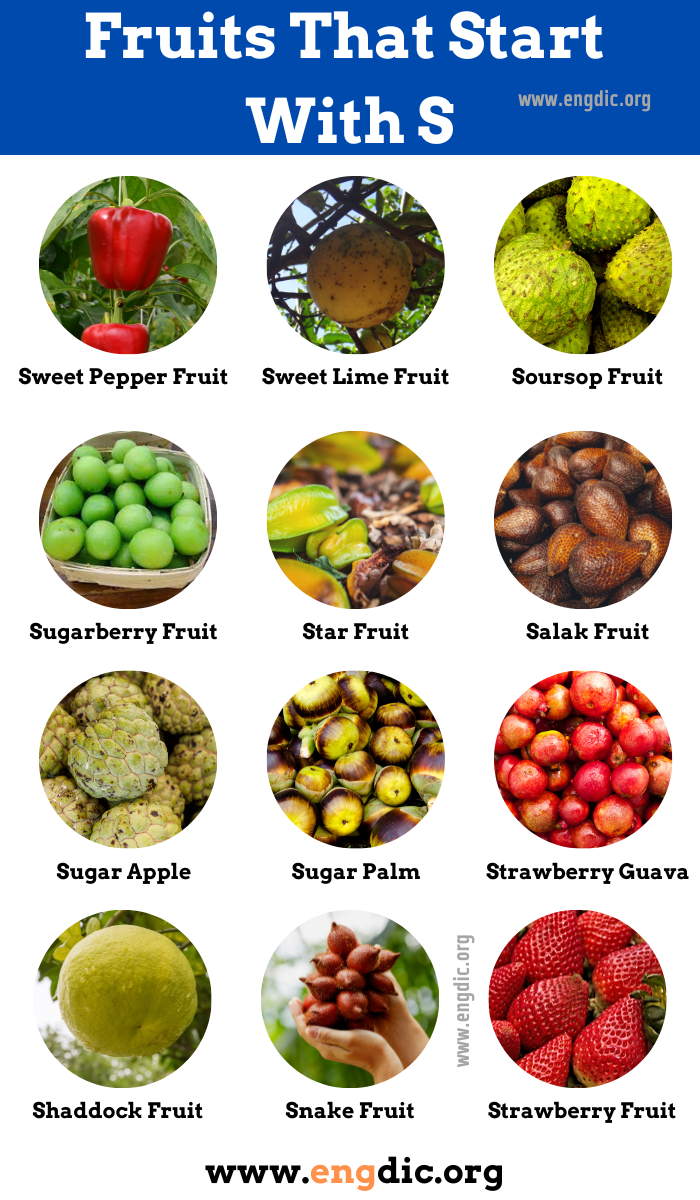

Check Other Fruits A to Z:
A – B – C – D – E – F – G – H – I – J – K – L – M – N – O – P – Q – R – S – T – U – V – W – X – Y – Z



